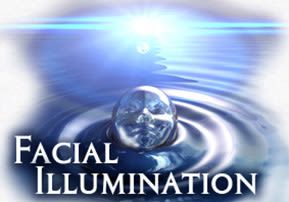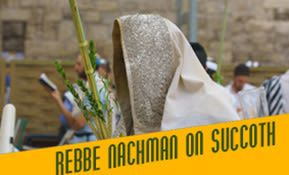
Facial Illumination
When a person falls into spiritual slumber, he loses his facial illumination, his Divine image. Such a person that falls into spiritual...

Rebbe Nachman further explains that when a person falls into spiritual slumber, he loses his facial illumination, his Divine image. A person that falls into spiritual slumber falls from emuna and from the seventy faces of Torah, for emuna is the mind and wisdom of Torah. Since a person’s wisdom illuminates his face, a fall from emuna – the epitome of wisdom – means losing one’s facial illumination. With no facial illumination, one has no countenance at all. Therefore, to awaken a person, he must be shown his facial illumination, in other words, the emuna that can illuminate his mind and soul. But, as Rebbe Nachman teaches, this holy illumination must be clothed within a seemingly-mundane tale and not in a conventional Torah lesson, for the following reasons:
1. When curing a blind person, he must be shown light gradually, little by little, for a sudden illumination will be blinding. The Chassidic tale is in effect a garment that reduces the illumination of spiritual arousal. A person that might not be capable of absorbing a Torah ethics lecture can certainly listen to and be influenced by a tale.
2. The light of the tzaddik‘s message must be clothed within a tale to hide it from the dark-side elements, to prevent them from clinging to such high-level holiness.
3. The dark-side forces that influence a person who’s trapped in spiritual slumber won’t allow him to listen to a Torah lesson; but, they won’t prevent him from listening to tales about blacksmiths, horses, and the like. The Chassidic tale in which the Rebbe hides an inner meaning brings a person to Torah and to emuna without stimulating the resistance of the dark side.
Apparently, the tale has no connection to the Torah. The dark forces of evil (a person’s own Evil Inclination) are caught off guard; they don’t care if he listens to bubba mysis (old grandma’s tales) all day long. But, within the words of the tzaddik‘s tales are hidden the light of arousal that stimulates a person to teshuva and to yearning for Hashem, so he can break free of the Yetzer’s grasp.
And the servant told him the story: “You were sleeping a very long time, several years. And I survived on the fruit…”
Here, a nagging question arises: The viceroy fell asleep from his eating; the servant ate from the same fruit. Why didn’t he fall asleep too?
The answer is, as we indicated earlier, that the servant alludes to the soul, and the soul doesn’t “fall asleep,” for it continues to be the life source that vitalizes a person. Even when the soul is in a period of stagnation, or spiritual slumber, outwardly it seems that the person is still awake, speaking, acting, and functioning. He could even be learning Torah or going through the motions of praying, even though he’s spiritually dormant. Like Rebbe Nachman said, there are those that sleep their days away, even though they think they’re serving Hashem, learning Torah, and praying…
A person in a spiritual deep sleep is certainly alive from a biological standpoint; such a person derives his low-level animal vitality from bodily amenities and passing enjoyments. Nevertheless, that person’s neshama, or inner Divine soul, is not getting what it needs and therefore sinks into a deep sleep. With no connection to emuna, the neshama sleeps; the bodily shell seems alive, but in actuality, it’s in a state of walking dormancy. In Rebbe Nachman’s terms, such people “sleep their days away.”
The concept of sleep belongs to the neshama, for when the neshama doesn’t illuminate a person, she doesn’t share with that person all the wonderful things that are happening to her every minute. The neshama enjoys sublime glimpses of Divine wisdom every single second; one’s body clouds the messages transmitted from the neshama. The thicker and more crass the body, the less the neshama illuminates.
To be continued.













Tell us what you think!
Thank you for your comment!
It will be published after approval by the Editor.